Young Adult: Overcoming the Splits
..
The screenwriter, Cody Diablo, takes great pleasure in lampooning her protagonist, perhaps because, with the passage of time, it’s easier to laugh at a younger version of oneself. As the sequel to Jennifer’s Body, it revisits many of the same themes and dilemmas but, this time, it’s told from a more “grown up” point of view.
In the place of Needy and Jennifer is Mavis Gary, a 30-something ghostwriter of young adult novels (which means she never gets credit for her work). On a whim, after receiving an email from Buddy, her high school boyfriend, she returned to Mercury, MN, her hometown. The two of them were destined to be together, at least that’s what she once believed, even though he was already married.
The power of her belief was transformative: when she went to meet him, she was a completely different person, no longer draped in the worn and familiar (like her favorite "Hello Kitty" t-shirt). As she waited, her phone became a worry stone and talisman, her lifeline to Buddy and the life that could be theirs. She’d already concluded they had “textual chemistry,” evident in the timing of their communications, something she yearned to manifest in real life.
Her sartorial shift reflected the profound gap between a life of misery and the ecstatic vision of what was possible with him: when her love was allowed to blossom and provided fertile ground to grow.
For those familiar with astrology, this return to Mercury is recognizable as the retrograde movement of the planet of communication. As ruler of the third house, Mercury is associated with childhood environments and the acquisition of new knowledge and wisdom; as ruler of the sixth house, it’s also associated with health and the skills necessary for maintaining one’s well-being.
The principle of return is found in Jennifer’s Body too: the story that Needy re-told from the darkness of her prison. In Young Adult, it’s evident with Mavis acquiring a new understanding that was unavailable to her before. For better or worse, only a certain amount of distance and a new perspective enables such a change.
These qualities would be especially important for all involved, since several splits are revealed, only one of them belonging to Mavis herself. While in Mercury, she’d witness two men struggling with dangerous schisms, perhaps even as profound as the split that she’d come to call her own.
She returned to see Buddy Slade, although he and his wife were expecting a child. The couple’s comfortably suburban home spoke of the life they built together, and the roots that bound them to that place. But Mavis wasn’t discouraged. After all, appearances can be deceiving, and Destiny always finds a way to overcome the obstacles put in the path of Fate.
Buddy’s wife taught children who were developmentally challenged. Lessons needed to be simple and direct, dwelling on the details most taken for granted. Like reading emotions, which required showing an expression and saying “this is what happy looks like” or “this is what anxious looks like,” learning to triangulate between what they saw, the teacher’s words, and the feelings that were their own.
In many ways, she is Buddy’s Anima, what Jungians describe as the (unconscious) archetype that represents the inner feminine in men. She could be a phantom, visible only to those who know him really well. But she might also be his wife, since men often marry someone who matches this version of their (unconscious) selves.
(In Jennifer’s Body, Chip lived with his mother and his obnoxious baby sister. In this updated version, Buddy is married to a teacher of the handicapped, and beginning a family of their own.)
The pairing of Buddy and his Anima-wife might look like a split, but it’s not. That kind of fracture is better illustrated by the other man Mavis met in Mercury – Matt -where the split was on full display.
He, too, lived with a woman although they were not married: she was his sister rather than his wife. Not only were they unmarried, they rarely spent a moment together. When Mavis visited Matt’s house, it’s the sister who answered to door. Matt spent his time elsewhere, in the garage – “his cave” – with his makeshift distillery, taking great pride in the rare concoctions he made.
There was something creepy about this brother-sister pair, living in the shadows, unable to conceive, unable to create a family. Matt, now a cripple, was beaten up in high school for being gay; the rumor was false but the reputation hounded him ever since. His split-off sister was a nurse who tended to the injured and the sick.
Unlike Buddy and his Anima-wife, Mavis saw a brother and sister who rarely spoke. But despite their profound alienation, the pairing made perfect sense – a cripple and a nurse – except she directed her attention elsewhere while he holed up with his alcohol in a darkened den.
(What was this if not a variation of Colin Gray and the Dead girls in his clique?)
If her love, Buddy, suffered a split, it certainly wasn’t in relation to his Anima. The marriage seemed to be fine and the couple certainly looked happy. On the surface, at least. If there was a split, it was probably somewhere else.
Throughout Young Adult, the viewer is invited to question Marvis’ sanity: was she completely deluded or were there unseen events that explained her obsession? This question remains unanswered resembling the sustained ambiguity found in He Loves Me … He Loves Me Not. Both films refuse to clarify the madness, reproducing the discomfort and disorientation the protagonists faced.
But Young Adult provides a number of clues. One is the drum set, although it wasn’t Buddy’s but his wife’s. She played in a band called Nipple Confusion made up of women with little children at home. But beyond this clarification, the joke behind the name remains unexplained. Who exactly was confused? And about what?
Is it the women themselves, befuddled about the functions of their anatomy and the purposes to which nipples are put? Is it the dizzying array of impulses an infant suckling on a mother’s breast? is it the conundrum of husbands displaced, forced to compete with a baby for the breast? Or may the “baby” is the husband himself, uncertain about whether it’s sex or comfort he seeks?
Or perhaps it’s something different, like the dilemma of having to choose?
For Mavis, the trip to Mercury was triggered by a crisis. For years, she’d been ghostwriting for the Young Adult series of novels called Waverly Prep about the lives and loves of teenaged boys and girls.
The problem wasn’t only that she didn’t get any credit for her work, although that surely made it more difficult to write. Neither was it only because the shape of the story was strictly limited, dictated by the Series Bible, a highly confidential document that invoked the most holy authority to delimit the foundation for her work. Although, surely, that cramped her style, as well.
The real problem was that the series was coming to an end. Soon, Mavis would be out of a job, even if only as a ghost. The future loomed before her like an abyss, shorn of the characters that had kept her company for so long. Also: Mavis didn’t know how to conclude her story. How was she to bring an her epic saga to a satisfying end?
That was the million dollar question.
The publishers were breathing down her back, pressing for her final chapters. And yet, when she sat down to write, nothing would come. Out of desperation, she’d grab onto anything for inspiration, like the soap operas on television or snippets of conversations overheard at the mall. So overwhelming was the idea of an ending, Mavis was unable to generate any inspiration of her own.
That’s how she decided to return to Mercury, even though it was the last place she wanted to be on earth. Buddy’s message had come at just the right moment, a providential sign of how a story could find its happy end. As if he were sending an S.O.S., pleading to be rescued from that god-forsaken place.
So, without so much as a second thought, she packed her bags, jumped into her car, and hit the road filled with inspiration for how things might be different, lifted from the fog of hopelessness that had surrounded her just a few hours before.
In the opening credits, she sings to the mix-tape that was stored in her closet, a gift from Buddy when they were sweethearts bedazzled by their feelings of love. One song in particular was her favorite, “The Concept” by Teenage Fanclub:
She wears denim wherever she goes
Says she’s gonna get some records from the Status Quo, oh yeah
Still she won’t be forced against her will
Says she don’t do drugs but she does the pill, oh yeah
..
I didn’t want to hurt you, oh yeah
I didn’t want to hurt you, oh yeah
She re-wound and re-played this song so many times one can only conclude it must have been their song. And as she sings, the credits zoom in on the cassette and player, as if examining the mechanics and inner workings of the tapes we play – and replay – in our heads and, when elated, which we sing out loud.
As for the cynics among us, this should not be forgotten: so much does this lift her spirits, the music functions as a fuel, igniting her spirit and lightening her soul.
However, by the end of her visit, Mavis was just sick and tired, exasperated with a world that refused to bend to her will. And like a dam that’s collected water for far too long, she reached her bursting point and exploded. Not at Buddy – her object of affection – but his Anima, the one that dealt with feelings and emotions.
The last straw came when the Anima spilled wine on Mavis, creating a splotch not unlike the kind of stain (metaphorically) produced by a broken heart.
As Mavis unleashed her anger, Buddy’s Anima remained silent, looking dazed and confused, but also guilty. When the torrent of words came to an end, Anima had little to say other than to whimper an apology, trying to smooth over the conflict, acting as if everything was normal, as if everything would be okay.
The minimizing gesture infuriated Mavis – incredulous at the lengths Anima would go to pretend everything was alright – since it also meant ignoring the anger and hurt right standing in front of her. But Anima was not alone in wishing to bury her anger, surrounded by others unwilling to corroborate the story Mavis tried to tell.
It was as if the entire crowd was emotionally challenged, frightened by the outburst Mavis brought to their neighborhood and their lives of “normality,” unable to do anything except watch passively, like motorists passing a bloody wreck at the side of the road.
In a sense, the crowd cannot be faulted. After all, she threatened the unspoken rules that regulated their quiet suburban lives. For much of her life, she wandered like a lone animal on the edge of society, frightening to others precisely because she didn’t seem to belong.
This dark side of Mavis – angry, withdrawn, and unkempt – is what they found so fearsome, unintelligible because she was filled with feelings no one else could understand. But if a child looked like this, she would be sending a clear message – screaming loudly – at least to those trained to see: not a sign of laziness or poverty, as some might judge, but a sign of severe neglect.
So, whether it’s a girl or a boy who’s not taken a shower in days, the clothing and demeanor give voice to an absence: of what the child’s been missing, whether it’s personal hygiene or, more crucially, the care and nurturance so necessary for providing a sense of rootedness and belonging in the world.
When this becomes chronic, the world fades into the distance. The child and, later, the young adult, is enveloped by a fog, unable to recognize what’s happened and why she (or he) feels this way. As world recedes, she becomes angrily obsessed with trying to understand. Feeling unreal and displaced but not knowing why.
Whether he knows it or not, Buddy is the tonic that calmed this feeling. Ironically, he’s also the one who made it worse.
His stance of confusion – mirrored by his Anima – is the face he wore in the light of day. This was his public persona, the “self” he showed to the world, but also his prevailing state of consciousness, what he’s able and willing to understand. Only in darkness were other emotions allowed to emerge, and it’s in those stolen moments that Mavis finally felt real and alive.
The irony is that Buddy – and Mavis – were caught in this split. Buddy was haunted by feelings that hadn’t yet found a way to consciousness, titillated by what exceeded his understanding yet frightened by what it represented. In men, this is often manifest in inarticulate passions (Freud called them drives), mysterious and powerful, precisely because (as urges) they bring a message more urgent than the routines and rhythms of “normal” life.
This is what Mavis represented for him and why, for much of this story, his brow is wrinkled, confused by the woman he kept in his life’s orbit despite already being married. And yet, when push came to shove, he projected his confusion onto her, even while claiming to care:
We all feel sorry for you, Mavis.
It’s obvious you’re having some mental sickness, some depression.
You’re very lonely and confused.
In this way, Mavis was condemned to exile once again, precisely because he built a wall around the forbidden aspects of himself, what exceeded Anima’s ability to understand. But rather than trying to figure out what that might be, he protected his self-image through a sacrifice: in his binary system, Mavis was relegated to the dark.
In light of this form of imprisonment, is it any wonder that Mavis would seek out Matt for a shoulder to cry on and for a sympathetic ear? And is it any wonder that she would disrobe before him, desperate for physical affection and the validation that comes from being seen?
For this is precisely what she had been denied her and what she so desperately sought: Buddy was her one and only, but these were things he was unable to give.
Mavis and Matt spent a lot of time together in Mercury, unplanned and unforeseen, largely because she needed a companion to help make sense of her life. And since he was familiar with misery, he could commiserate, although he couldn’t fathom what she saw in Buddy, the man she considered the true love of her life.
When she was at her most miserable, that’s when she called on Matt, as if his familiarity with suffering somehow helped to ease her own pain. Whether they knew it or not, all three of their lives would forever be changed, for it marked the tipping point after which nothing would be the same.
So, while all three had a role to play in creating that moment, the impetus and direction of what followed would be entirely up to each of them, alone.
In the morning, Mavis met the Anima-sister in the kitchen. (Once, again, Matt was nowhere to be seen.) And for the first time, Mavis would have a heart-to-heart, less about commiseration than reflecting on the state of her life.
As might be expected, the nurse had encouraging things to say since she envied Mavis and what appeared to be her exciting and adventurous life. Which is why, when Mavis made the decision to leave, the Anima-sister pled with her, asking if she could tag along: “Please, take me with you!”
Everyone here is fat and dumb.
They’re nothing; might as well die.
This place blows.
Like Mavis, Anima-Nurse despised Mercury, stuck in a dead-end job and a deadened existence, perhaps even feeling as if she wanted to die. But Mavis rejected the nurse’s plea, saying it would be better for her to stay in Mercury, instead.
Because the nurse was one half of a split, she couldn’t see what was more obvious to Mavis: that she belonged with her brother. Her desire to escape was a symptom of the fracture between sister and brother, alienated from the one who carried the antidote the other’s pain. For Matt was in serious need of healing and, if the symbolism of the owl is correct, he carried untapped wisdom that could address her grief.
Because it’s unrecognized, her grief took the form of a grievance – diffuse and scattered – aimed at the only targets available to her: the people in her community, perhaps even those in her care. But If she became more attuned with her brother, she might find the connection between this anger and the sibling’s split: the secret of how they were separated and how that knowledge was hidden in the dark.
The problem of Buddy and his Anima was different, one that involved how both were drawn to Mavis, as if she represented something arresting, leaving them entranced and in a daze.
This would explain why Buddy went out of his way to stay in contact, sending her messages, suggesting they meet for dinner, even inviting her into his house. It seemed important to keep Mavis in his life, as if there was a tantalizing lesson he still hadn’t learned.
According to Jungians, a man’s relationship with Anima develops through stages that represent his spiritual evolution. She is the “other” through whom a man can envision himself becoming whole. At each stage, Anima appears as an archetypal image that captures his imagination (as his muse); often, she’s manifest in the woman he asks to be his wife.
When Anima is first activated, she takes the form of Eve in the Garden of Eden (from which the couple is later evicted and condemned to a life of misery). Next, comes Helen of Troy, admired for her beauty but also her self-reliance and capacity for worldly success. Then comes Mary, the embodiment of virtue and mother of Jesus (which is how He comes to be born). The final stage is Sophia who is wisdom personified, at which point the polarity becomes fully integrated and women no longer need to stand for something other than who they really are.
Clearly, Mavis “represented” something. If Buddy recognized this, Mavis would be freed of the bedazzlement and confusion while he developed a relationship with Anima instead. He could also look at how he spends his time, working at General Mills and eating lunch with his father everyday, both symbolic of a hyper-masculine – even militarized – existence that left little little room for Anima to be properly understood.
Only two-thirds of the way through this story do we realize that Mavis has a family. She’d been avoiding them, although the exact reasons for this are unclear.
Her family visit was unremarkable except for this tiny fact: she was repeatedly invalidated, made hyper-sensitive from a lifetime of slights and invisibility. She tried to have a serious conversation with them, confessing that she might be an alcoholic which they responded to with dismissal and laughter. (Oh, don’t be silly!) She asked that they remove the photo from her failed marriage, but they said it brought back fond memories of the man who was no longer a part of their lives.
Almost immediately, one of Mavis’ childhood habits returned, one that continued to plague her during moments of anxiety and stress. She selected a strand of hair and then, carefully and deliberately, yanked it out, enlarging the bald spot already at the back of her head. Unable to connect the dots, her parents pounce on her, as if this “habit” was a sign of madness: You’re not still doing that, are you? You’re hair’s so beautiful! (Why would you want to do a thing like that?)
The green hoodie was her protection, donned immediately upon walking through the door. She’d made a beeline to her old room to retrieve it, a sign of what she treasured and a signal of the dis/connection between heart and home. Buddy was a salve and a glen, her Slade. (Curiously, his name also means: sole of a plow.)
The hoodie was an a token of affection, reminding Mavis of a happier time when they celebrated their love. Years later, it still provided comfort and security – like a second skin – since entering her childhood home felt like walking into a lion’s den.
When Mavis accepted Buddy’s invitation to hear Nipple Confusion, she discovered he was less protection or comfort than she’d imagined. In fact, she quickly learned that the song she thought was theirs actually belonged to them: Buddy basking in Anima’s enthusiasm, Anima singing only to him.
What might have been a triangular relationship resembled something else, leaving Mavis angry, excluded, and terribly alone. For just like men, women have their (unconscious) counterparts called Animus, whose growth is facilitated in relation to men: it’s through their relationships that Animus becomes recognized and known. The only problem is that, for Mavis, the process had stalled; and Buddy’s confusion wasn’t any help.
Ideally, after being activated, a woman’s relationship with Animus develops through stages. At first, Animus is associated with physical prowess, the most externalized manifestation of masculine strength. Next, Animus is associated with adventure and bravery, as in the Hero or Man of Action. At the third stage, Animus manifests in relation to the word, evident in the power of oration and speech. Finally, Animus is associated with meaning, as in Hermes, messenger and guide who, like Sophia, helps mediate between the unconscious and conscious mind.
According to Jung, Anima and Animus are analogous although women’s relationship with Animus is more complex. Anima usually consists of a single image, whereas, Animus consists of a multiplicity, each myriad of traits and potentials women eventually come to recognize as their own (which would explain why Durga is born surrounded by a congregation of men).
When the senses are attuned through the process of triangulation – tracing the line connecting a man, a woman, and archetype – a circuit of energy is created that propels spiritual development to its conclusion.
In many traditions, the pivot of this process is depicted by superimposed triangles, one pointing upward the other pointing down, representing opposing forces that are brought into equilibrium. The tension between the opposites is balanced; water and fire turns into air.
Often, the triangles are enclosed by one or more circles, as if to emphasize the importance of containment for the procedure to work. In alchemical depictions, the circle represents a flask, the vessel where are heated and transformed. The witch’s caldron probably represents the same function expressed in different terms.
Portrayals such as these provide a symbolic depiction of the process of spiritual transformation as understood by various traditions of wisdom. Despite their differences, however, the geometry makes the heart of this process clear: a pair of separated figures (below), seeking to balance themselves (the trident), become elevated and united (above).
The mount or vehicle represents the kind of obstacles that must be surmounted: In Muladhara, the vehicle is the elephant; in Swadhisthana, Makara, the crocodile; in Manipura, the ram. Each embodies a facet of tremendous power and force.
In Anahata, however, the vehicle is the deer: swift-footed and easily frightened, representing a different kind of challenge. When surmounted, it also represents an achievement, less about facing dragons and demons than calming the tremors of the heart.
The Hrit or Surya chakra associated with the Shakta tradition is the connecting link between Manipura and Anahata. It’s said to transmit heat to the rest of the body and supply Manipura with the force of fire. It’s ringed by three circles: the sun, the Moon, and Fire. In the center is the Wish-Fulfilling Tree that emerged from the Churning of the Ocean.
In the waking state, Hrit remains dormant. In the dreaming state, energy flows to the petals creating vrittis and emotions like happiness and joy, cruelty and anger, laziness and sexual desire. These are experienced in the waking state. As energy flows to different petals, the wakeful desires and emotions shift, as well.
Spiritual practice entails the reversal of this process, turning inward from the petals to the place from which their energies come. Associated with each petal is a siddhi that marks progress along this path. In order to protect against ego inflation, it’s best to accept them quietly as reassurance that the road being travelled is correct.
In some portrayals, a bejeweled throne sits in front of the Tree. Devotional texts place various deities here, usually a manifestation of Vishnu or Shiva. But the empty seat suggests that the true occupant is none other than Atman, unrecognized until the process beginning in Anahata reaches toward the crown.
In Jungian terms, this is the process whereby Anima and Animus of the opposite sex is replaced by the same sex archetype of the Wise Old Woman and Wise Old Man, replacing the alluring Other in the imagination and in dreams. This is when the lifelong process of individuation is finally complete.
By the end of her visit to Mercury, Mavis was forced to recognize that her vehicle had seen better days and was nearing the end of its natural life. Sooner or later, all of us reach this point, forced to face the limits of a vehicle, despite the faithful service it’s provided over the years.
When this happens, we’ll be faced with a decision: can a few more miles be coaxed from the vehicle or is it time for a change? The answer doesn’t boil down to money or convenience since there are nostalgic ties to contend with, memories associated with travels of the past. Sometimes, it’s easier to stay with the familiar rather than making a decision about what comes next.
In Muladhara, the elephant is associated with clouds made by tossing water into the air (Aira-Vata). In Svadhisthana, Makara is half terrestrial and half aquatic, known as a sea-monster due to its predatory aggressiveness; when tamed, it’s the vehicle of Ganga and Varuna. In Manipura is the ram or he-goat, vehicle of Agni, born of water, who’s elevated form is praised as the power of transformation and the ability to digest. The deer is the vehicle of Vayu, god of the wind, also known as the purifier or breath of life.
What’s commonly described as the "opening" of the chakras is more accurately described as reversing the flow of energy, turning a lotus that faces downward to one that faces the sky. The mechanism for this shift is found in the sequence of vehicles and the unique challenges each of them brings. In the lower three, these are predominated by the element of water.
At each stage, the centrifugal energy moving outwards is domesticated, channeling its power inward and upward as opposed to the dispersal that results when its force is untamed.
After moving “backwards,” there’s a point in Mercury’s retrograde orbit called the Direct Station. This marks a return to forward movement after the period of reversal has been exhausted and its phase of revisiting an earlier path is complete.
For Mavis, this point arrived some time after her talk with the Nurse. An insight created the impulse to get on with her life. That’s when she packed her bags and hit the road, just like when the film began. Except this time, she stopped at a diner to give her epic story a conclusion. Somehow, the obstacle that had been blocking her path had magically been removed.
That’s also when she got a good look at her vehicle, coming face-to-face with the realization that some radical changes needed to be made. But for the first time, she was able to bear the split between her ethereal story and the hard facts of her life, summoning the strength to begin closing the gap that had nearly torn her life apart.
And just like Jennifer’s Body, the closing frames of this film point to a sign at the side of the road, suggesting caution so as to avoid another calamity. For Mavis, this meant avoiding the lane that forced an early exit, refusing the declaration that she MUST turn right.
If Buddy and Matt had paid any attention as Mavis left Mercury, they’d learn from her example and discover ways they could heal the splits of their own.
..

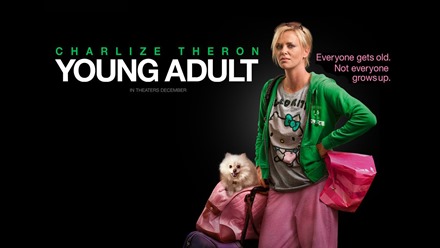









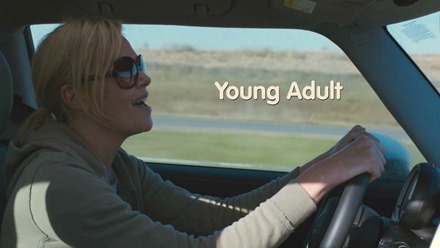


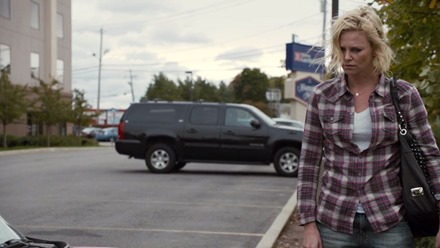

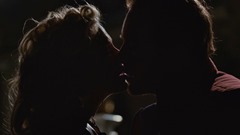











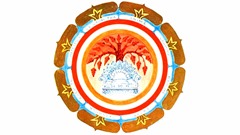


Thank you for the excellently detailed work!!!
I’ve seen the movie a dozen of time, trying to figure out the deeper meaning.
I have so many questions. If you could help me with those, I’ll be thankful.
I can try to help.
What are your questions?
may i send the questions to your email?
Is “mistified555@gmail.com” a correct address?
I’ve sent a message but unreplied.